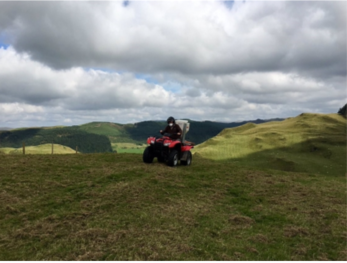22 February 2018
As part of our Farming Connect activities three additional blocks of new treatments have been created on grassland adjacent to the Brignant long-term plots. Previous research at IGER Bronydd Mawr clearly demonstrated that withdrawal of fertiliser inputs can have a profoundly negative effect on the productivity of upland grazed permanent pasture after only a few years, with both sown and unsown grass species being replaced by moss and litter. Biomass and nutritional value are reduced as a consequence, and over time the carrying capacity can fall to less than a third of that possible on grassland where inputs are maintained. The grassland around the original Brignant plots has had no fertiliser inputs for at least 8 years, and similar changes are apparent.
In this project we are testing the effectiveness of alternative renovation techniques as options for sustainable intensification on permanent pasture. The first approach consisted of treatment with a regeneration harrow to remove dead litter and moss; liming to raise the pH to above 6; applications of potassium and phosphorus as required to restore optimum soil indices; and the reintroduction of spring-time applications of inorganic nitrogen.
The second approach implemented the same protocols for harrowing, liming and restoring phosphorus and potassium indices, but this has been followed by broadcast seeding with a mixture of different white clovers, red clovers and lotus (sowing rates 3.3 kg/ha, 3.5 kg/ha and 2.2 kg/ha respectively). The varieties and lines of each used have been specially selected based on results from on-going research by the plant breeders at IBERS. They include types specifically selected for their ability to establish in marginal soils, and grazing tolerance. Slug pellets were spread immediately following seeding. Both the harrowing and broadcasting operations were done using quad-mounted equipment to maximise access to steep ground while minimising soil compaction. Regular measurements are being made of sward botanical and chemical composition to assess establishment and persistency of the introduced legumes, and the effect of the two renovation strategies on biomass yield and nutritional value.

